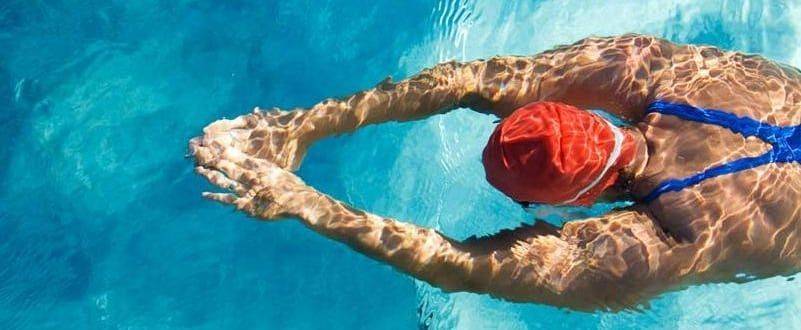
Swimming in the sea is recommended for those suffering from musculoskeletal problems, however each style has its own indications
Swimming is considered one of the best exercises, as in the water the body becomes lighter and the movements become easier and more efficient.
However, when someone suffers from chronic musculoskeletal problems, such as arthritis, cervical syndrome, herniated disc (discopathy), sciatica, lumbago etc., the choice of time and style of swimming presents some peculiarities.
As explained by physiotherapist Dr. Georgios Gudevenos, scientific associate of the University Orthopedic Traumatology Clinic of the University of Crete, swimming in the sea is suitable for those suffering from musculoskeletal problems because due to the buoyancy they can exercise without straining their muscles and joints.
However, "before a patient rushes to swim, he should consult his doctor and physical therapist about the program, time and method of swimming appropriate for his condition, as well as the preparatory exercises he may need to do on land for to make swimming easier," he says.
In general, each swimming style has its own indications. Here are what they are, according to Dr. Gudevenos:
- Free. It is characterized by rhythmic and uniform movements. It is ideal for strengthening the pectoral, abdominal and back muscles. It also exercises the legs, arms and shoulder blades. Strengthens the heart and lungs. It is recommended for people with mild forms of arthritis (e.g. spondyloarthritis, osteoarthritis, etc.) in all joints, as well as with back pain due to muscle and ligament damage (such as our well-known lumbago). Conversely, it should be avoided by those with acute cervical syndrome or a recent history of acute cervical syndrome, as well as those with acute shoulder periarthritis.
- Backstroke. It works the abdominals, sacrum, glutes, hamstrings and quadriceps, as well as the muscle groups of the upper limbs, shoulders and back. Gives correct alignment to the whole body. It's easier to practice because it doesn't require as much breathing as freestyle. It is recommended for people with chronic back pain, with a history of knee, hip or shin (ankle) injury, as well as for those suffering from mild cervical syndrome. It is also suitable for those suffering from chronic shoulder periarthritis or elbow epicondylitis (tennis elbow), kyphosis or scoliosis. Arah is the best exercise for the spine. On the contrary, it should be avoided by those suffering from acute forms of cervicobrachial syndrome and by those suffering from all acute conditions (e.g. acute low back pain, acute sciatica, radiculitis, etc.).
- Front. It exercises the pectoral muscles, gives proper movement and flexibility to the spine and tightens the entire upper body. It is rhythmic, uniform and with relatively easy breathing. It is recommended for people who have stiff joints and should not strain them suddenly, such as those suffering from arthritis, sciatica, back pain, periarthritis, kyphosis and scoliosis. On the contrary, it is contraindicated for those who have cervical stiffness or spondylolisthesis in the lumbar spine, i.e. in the middle.
- Butterfly. It is considered the most laborious swimming style, because the arms, legs and trunk participate simultaneously in its propulsive movement. In this way, the muscles of the chest, thighs, shoulders, arms, as well as the cardiorespiratory system are exercised.
Due to its particular requirements, it is recommended only to those who are familiar with its technique and to athletes, as long as they have reached a stage of almost complete recovery from any musculoskeletal problems they were dealing with.
Source: THE NEW Insert Health

No Comments